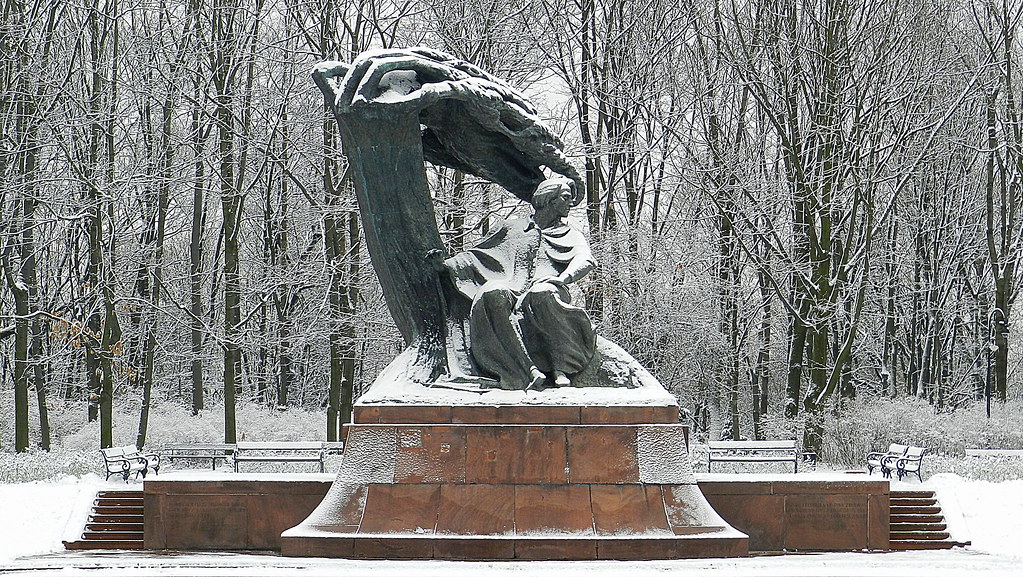In the recent Not the City article I focused on Richmond, not the city of course, but the county. There, the local government centered on a village called Warsaw (map). That seemed like an exceptionally odd choice. There wasn’t a large Polish diaspora on Virginia’s Northern Neck as best as I could tell. Why name a town after the capital of Poland in a place without any discernible Polish influence?
I did discover the reason soon enough. Warsaw’s original name was Richmond Courthouse which must have been terribly confusing. The much larger city located elsewhere in Virginia with the same name definitely dwarfed it. So residents changed the name to Warsaw in 1831 in allegiance to events of the Polish–Russian War of 1830–1831.
I’d learned in Can’t Get Enough of Kossuth that citizens of the United States often associated personally with the struggles for freedom and democracy happening beyond its borders. These clashes mirrored some of the underpinnings of the American Revolution. They resonated emotionally with many citizens of the early United States.
This sense of solidarity even translated to the naming of towns. Warsaw was another example. Thus, GNIS listed 51 Warsaw place names in the United States and certainly Polish immigrants settled many of them. However, a handful of others sprang up during the era of the Polish–Russian War and likely derived their names from it.
The Polish–Russian War
This video provided a basic overview of the November Uprising and the Battle of Warsaw. Accompanying text is in English and most of the imagery requires no direct translation. It should make sense after the early part spoken in Polish. I guess it’s Polish. I couldn’t tell what language it was even though I’ve been to Poland and should know better (even went to Hel and Back). It’s definitely from somewhere “over there” though. No matter, you’re all bright people and you’ll figure it out.
Synopsis
I’ll try to provide a summary for those who don’t want to sit through nine minutes of video. So, a portion of Poland under Russian control gained a modicum of independence after the Napoleonic Wars. The Czar granted its Polish province authority to establish its own constitution and congress, allowing it to run its own courts, form its own army and establish its own treasury.
Russian control remained mostly hands-off at the start and then began to gradually tighten, becoming increasingly autocratic. Frustrations reached a tipping point in November 1830. Then the Polish army broke into rebellion and support spread to the rest of population. This uprising soon broke into an actual war involving large armies. Decisively, Russian forces assaulted and crushed resistance at the Battle of Warsaw in September 1831. Then things went badly for the Polish people.
Fallout

Thousands of Polish elites fled Poland and spread throughout Europe. This included many of its citizens with education, money or special talents. One example was the composer Frédéric Chopin (Fryderyk Chopin) who fled to France.
However, Poland never forgot its cultural heritage. Today, Warsaw’s Royal Baths Park (?azienki Park) includes the Chopin Statue (map). Poles cast it in 1926, Germans destroyed it in World War II and Poles re-cast it in 1958 using the original mold. I’m not sure how I got down that tangent although I found it interesting. Let’s get back to Warsaw places in the United States named for the uprising and the ensuing war.
Kentucky

Kentucky’s Warsaw (map) got its name in 1831. It started as Fredericksburg. However Kentucky already had a Fredericksburg so this newer one became Warsaw to avoid confusion. Events from Poland were still fresh in the news at that time.
Missouri

In Missouri, settlers platted a brand new town in 1837 and it became Warsaw (map). I didn’t find conclusive evidence to tie its name back to the Polish–Russian War. However, the year of establishment made it plausible. The town actually attributed it as honor to Tadeusz Ko?ciuszko, a hero of the American Revolution who was from Poland. He was best known for constructing American defensive fortifications including West Point.
Indiana

Indiana followed a similar pattern and its Warsaw (map) arrived in 1836 at the same time its home county formed, Kosciusko County. It’s now the “Orthopedic Capital of the World.”
“The Warsaw, Indiana-based orthopedic cluster is unique in the business world. Its rise to global prominence started serendipitously when Revra DePuy began his company in Warsaw in 1895. It was assured when DePuy employee and area native J.O. Zimmer launched his own company in 1927”
That same source credited Warsaw with $11 billion in orthopedic sales. So this equals one third of the orthopedics sales in the world, and employs 45% of the Kosciusko County workforce!
Ohio
Unfortunately, I didn’t find much about Warsaw, Ohio. It was a tiny place with only about seven hundred residents. Its website said merely,
“Our Village of Warsaw was laid out in 1834 and was named after the Polish capital, a country then endeavoring to secure her independence. The village is among the youngest in Coshocton County.”
The time period seemed just about right and the town history implied a connection.

Leave a Reply